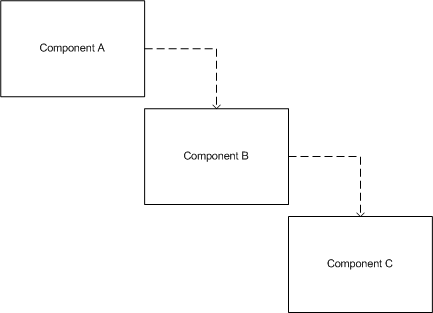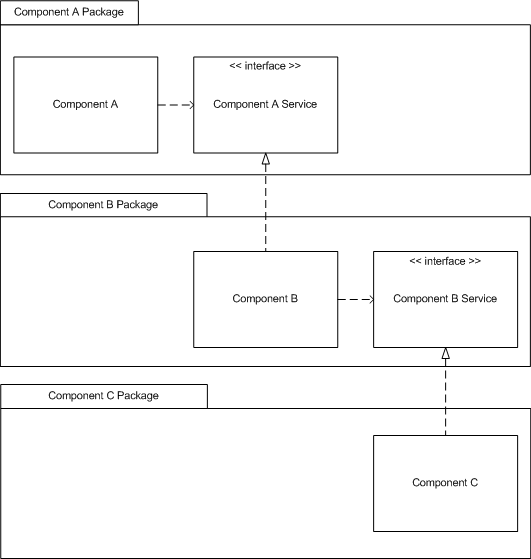CSC/ECE 517 Fall 2009/wiki3 5 rm
Dependency Inversion policy
Introduction
The Dependency Inversion Principle has been proposed by Robert C. Martin. It states that:
"High level modules should not depend upon low level modules. Both should depend upon abstractions. Abstractions should not depend upon details. Details should depend upon abstractions."
The principle is reverse the conventional philosophy of high level functions in softwares need to depend on the low level functions. The principle states that high level or low level modules should not depend upon each other, instead they should depend upon abstractions. Further it also states that these abstractions should not depend on the details and inversely the details should depend on the abstractions. According to this principle the way of designing a class structure is to start from high level modules to the low level modules:
High Level Classes → Abstraction Layer → Low Level Classes
Overview
The Dependency Inversion Principle is defined as follows:
- High-level modules should not depend upon low-level modules. Both should depend upon abstractions.
- Abstractions should not depend upon details. Details should depend upon abstractions.
The problem with the conventional design architecture is that the higher level components depends on the lower level components. This can be understood from the diagram below.

From the above diagram we see that the component A depends on component B, which in turn depends on component C. These dependencies make the higher level modules or components more complex and inflexible. This also leads to tight coupling of higher and lower level components. Thus reducing the over all flexibility of the system.
The primary motive of the dependency inversion principle is to decouple the high level components from their dependency on the low level components of the system. This can be obtained by creating interfaces as a part of the higher level component package which define the components for the extra functionality required. This protects the component from depending on any specific implementation of the provided interface/functionality. Thus making the given function more portable. The above example can be restructured as follows

Conclusion
This principle is applied to make sure that the high level classes are not directly dependent on the low level classes, they are doing that using either by interfaces or abstract classes.In that case the creation of new low level objects inside the high level classes(if necessary) can not be done using the operator new. Instead, some of the Creational design patterns can be used, such as Factory Method, Abstract Factory, Prototype. Of course, using this principle implies an increased effort and a more complex code, but more flexible. This principle can not be applied for every class or every module. If we have a class functionality that is more likely to remain unchanged in the future there is not need to apply this principle.When a component does not depend on lower level components directly but only through abstractions this component is mobile that is, the component is reusable in many different contexts.
References
[1] http://www.objectmentor.com/resources/articles/dip.pdf
[2] http://www.ctrl-shift-b.com/2008/12/examining-dependency-inversion.html Amazing article lots of stuff
[3] http://blogs.imeta.co.uk/jyoung/archive/2008/12/17/540.aspx----pics in here as well
[4] http://en.wikipedia.org/wiki/Dependency_inversion_principle
[5] http://www.lostechies.com/blogs/gabrielschenker/archive/2009/01/30/the-dependency-inversion-principle.aspx
[6] http://www.oodesign.com/dependency-inversion-principle.html
[7] http://www.eventhelix.com/realtimemantra/Object_Oriented/dependency_inversion_principle.htm
[8] http://davidhayden.com/blog/dave/archive/2005/06/10/1261.aspx
[9] http://doodleproject.sourceforge.net/articles/2001/dependencyInversionPrinciple.html
[10] http://stackoverflow.com/questions/62539/what-is-the-dependency-inversion-principle-and-why-is-it-important
[11] http://www.surfscranton.com/architecture/DIPandOCP/img0.html
[12] http://iface.wordpress.com/2006/03/16/dependency-inversion-principle-and-interface/
[13] http://www.exciton.cs.rice.edu/JavaResources/DesignPatterns/TemplatePattern.htm